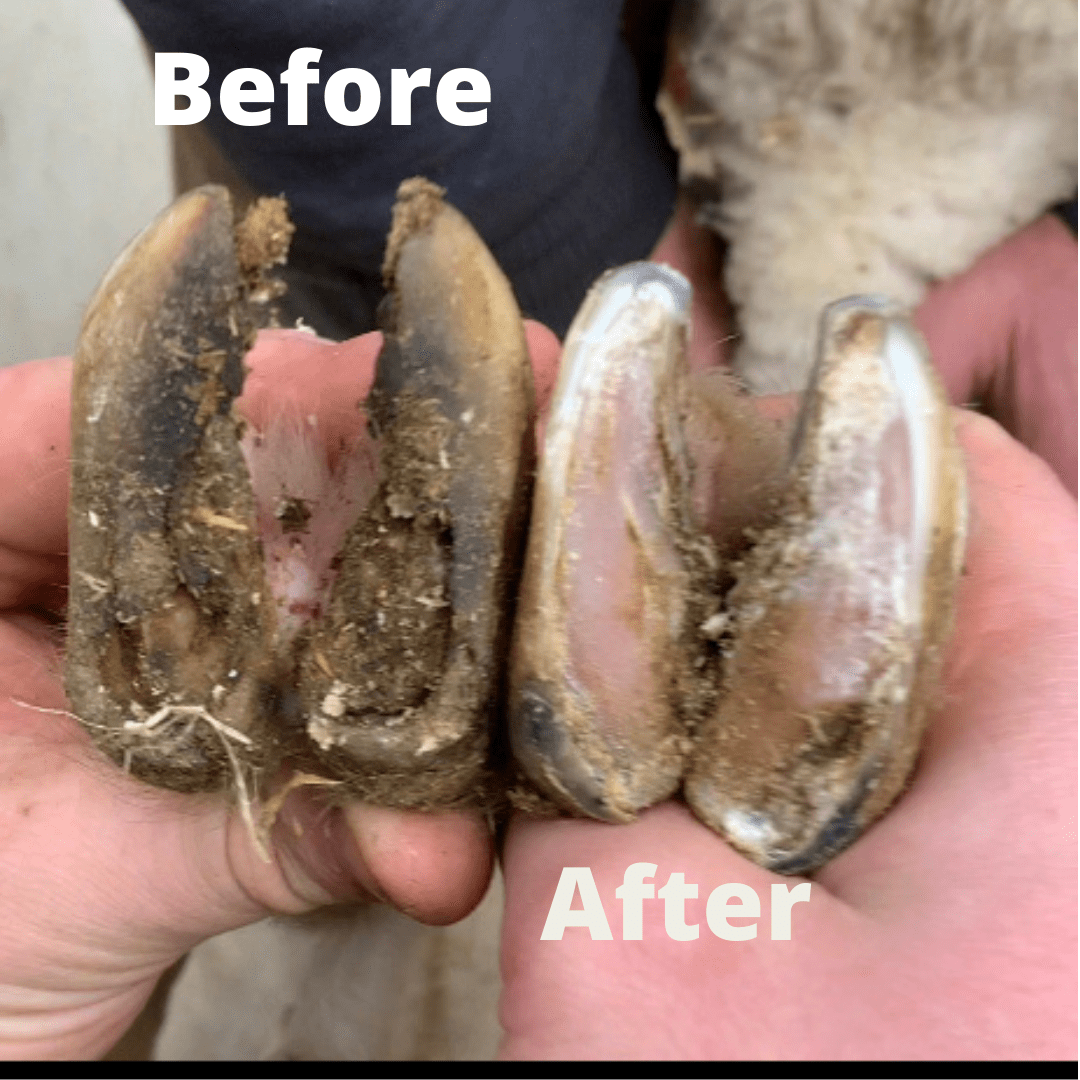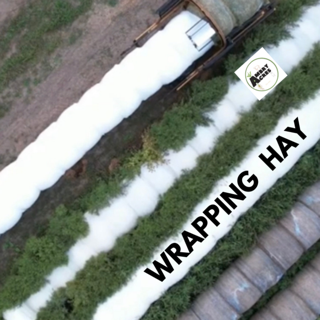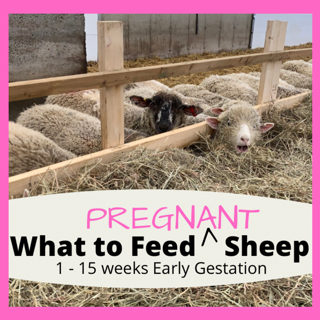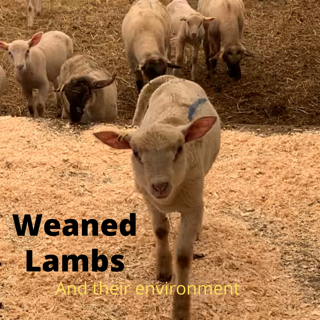Why should hooves be trimmed?
Sheep hoof trimming makes for healthy feet and hoof care is an important aspect of sheep production and management and a necessary task for maintaining good herd health. Hoof diseases can affect the health and welfare of sheep and have a negative effect on productivity.
Regular trimming reduces the chance of infectious and non-infectious hoof lesions from developing. Overgrown hooves are a risk factor for developing hoof conditions which can lead to foot rot. The key to keeping productive ewes in the herd is to keep well-trimmed hooves.
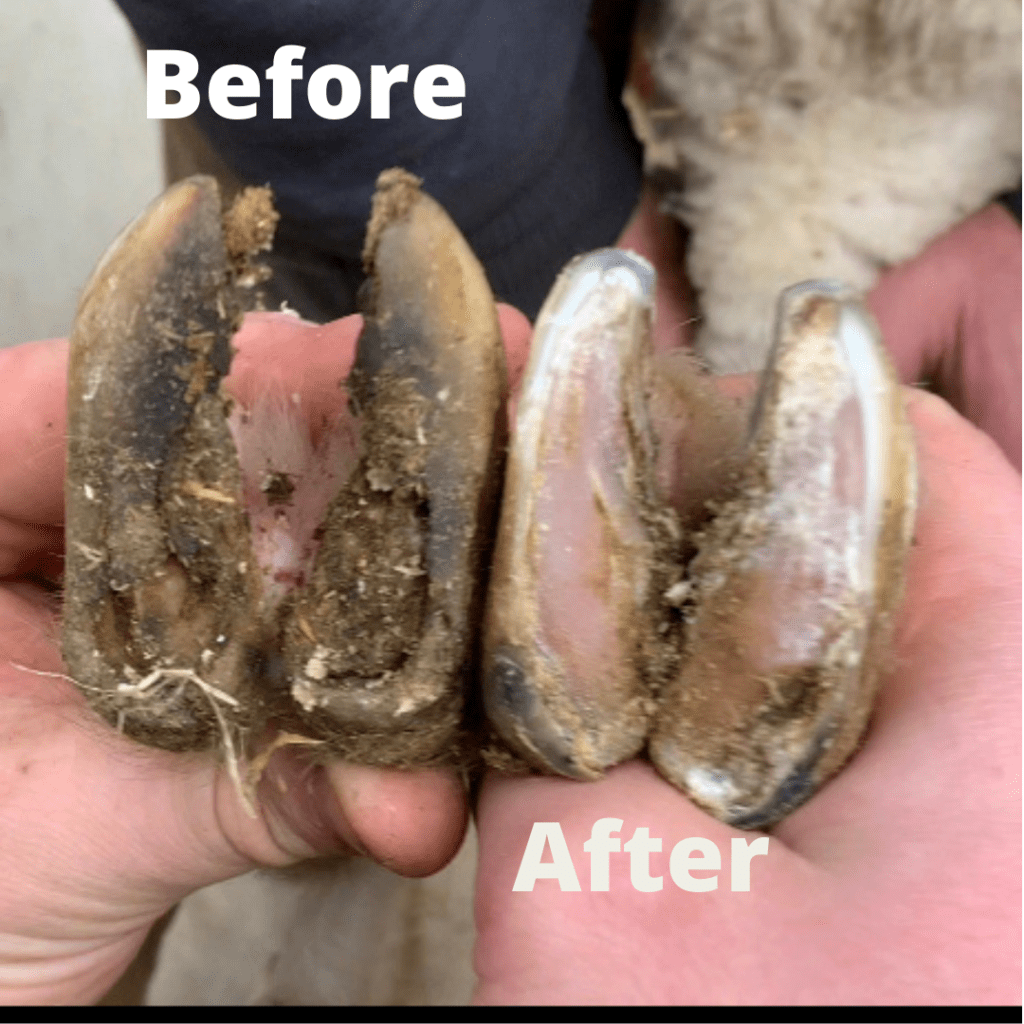
This image shows how the bottom of the ewe’s hooves look like both before and after trimming.
Sheep hoof trimming makes for healthy feet.
What do you need?
The key to quick accurate hoof trimming are sharp hoof shears and a hoof knife. Sharp instruments mean quick cuts, which can reduce stress on the sheep and worker. A spray bottle with soapy water and paper towel nearby allows you to wash the hoof before cutting. A clean hoof surface minimizes the chance of infection, makes it easier to trim, and your trimming tools are less likely to dull. A hoof rasp will help you file down the sharp edges on the hoof that can be left after trimming. Finally, having hydrogen peroxide or a similar disinfectant and “Bleed Stop” or cornstarch nearby are handy in case you trim too close and cause bleeding. You will also need a container with disinfectant to dip your tools between animals to prevent transfer of contagious hoof lesions.
Source: http://www.omafra.gov.on.ca/english/ag.html
Hoof Trimming
Foot paring shears are essential to doing the job properly.
To trim the feet, securely hold the leg of the sheep. Inspect the hoof and remove any mud, manure, or small stones between the walls of the hoof. A rotten smell is usually indicative of foot rot. Clean all the junk and crud out of the hoof using a knife or the point of the shears. After cleaning the hoof, begin trimming around the perimeter of the hoof.
When trimming feet, it’s best to avoid stressful times such as hot weather or late gestation. Trimming too much at one time can cause sore hooves, so gradual trimming is key. Avoid trimming hooves during the dry period, as many changes are occurring in the ewe that can lead to lameness issues.
It’s a good idea to combine hoof trimming with other management tasks, such as shearing or vaccinating.
Proper restraint
Easy, low stress handling of the flock will keep animals calm when sorting them for hoof trimming. Once ready to hoof trim, pick an area where you will have easy access to the hooves of the animal, easy access to your hoof trimming tools, and allows for easy animal restraint. At this time, we do not own a tilting machine therefore; the sheep is tipped onto its rump for hoof trimming.
Sheep Hoof Trimming in Action inside Sheep Barn Video:
Trim off small sections of hoof
Trimming off small sections at a time will keep the ewe calm while trimming, but will also allow you to make a nicely shaped hoof. Lameness can be caused by poor trimming, so pay attention to how deep you are trimming. Once you start to see pink on the hoof, stop trimming immediately. The foot should be trimmed from the heel to the toe to remove excess growth of the “horny” portion of the hoof.
How often should sheep hooves be trimmed?
Observing the herd on a routine basis will help you to identify long hooves. The frequency of trimming is affected by a number of individual factors (genetics, age, breed) and environmental factors (nutrition, housing) and therefore the rate of growth is unique to each operation.

